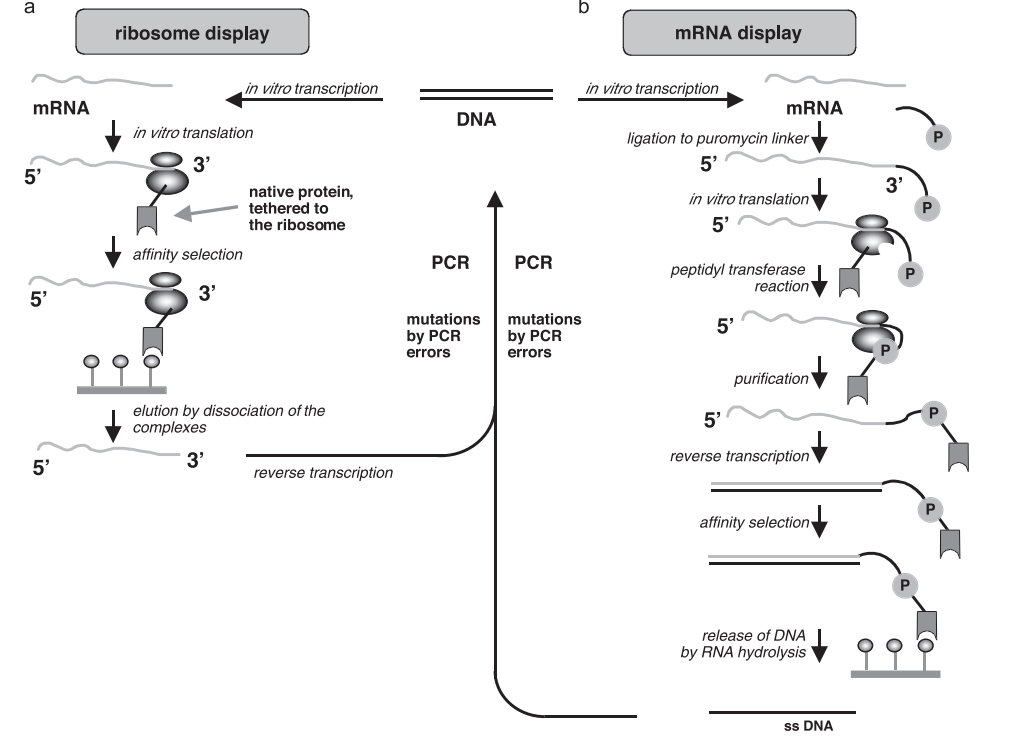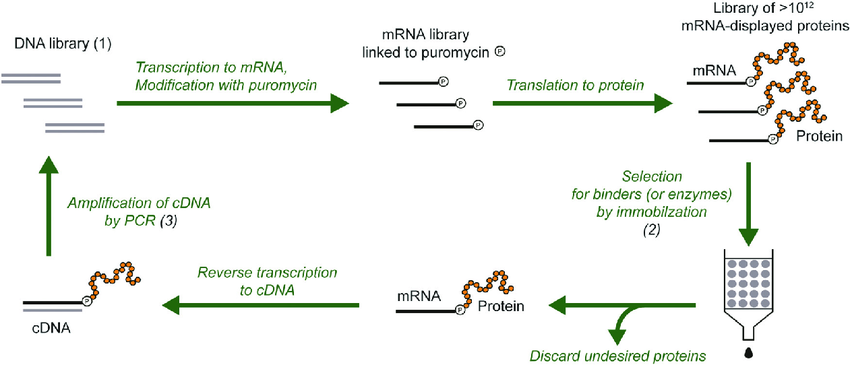CRlSPR/Cas9 is an acquired immune system used by bacteria and paleontological bacteria to resist the invasion of genetic material such as foreign plasmids or bacteriophages. The CRlSPR/Cas9 technology was used to establish a mammalian genome-wide mutation library or a gene mutant library related to a certain type of function, and the genes related to the screening phenotype were discovered through functional screening and enrichment, followed by PCR amplification and deep sequencing analysis, which was called CRlSPR/Cas9 gRNA library screening. gRNA libraries are an ideal tool for drug screening or targeted screening of specific pathways, and the establishment of gRNA libraries will play an important role in functional gene screening, disease mechanism research, and drug discovery.
The CRlSPR/Cas9 gRNA library screening process is a five-step process: gRNA library selection, gRNA library amplification, gRNA library lentiviral packaging, gRNA library screening, PCR amplification, and NGS sequencing
1. gRNA library selection
First, the customer selects the desired gRNA library. If the customer proposes library customization (less than 300 genes) according to specific needs, we will design the gRNA of a single gene according to the gene population information provided by the customer, and ensure that each gene is designed with 3 different gRNAs to ensure the mutation of gene function to the greatest extent. The vectors we use are mono/double lentiviral vectors, where a single lentiviral vector carries both a single gRNA and cas9 gene, and a dual lentiviral vector that carries a single gRNA on a vector, and the cas9 protein is provided by a vector that carries cas9 alone. Both modal vectors carry additional resistance selection markers.
2. GRNA library amplification
The number of vectors constructed above is small enough for lentiviral packaging and use of libraries. Therefore, the above vectors need to be amplified to increase the total amount. After the above gRNA vectors are constructed, we mix these vectors into a pool (i.e., vector pool) in the same proportion, and then use special electroporation to amplify the vector pool, collect colonies, and expand the culture, and finally extract plasmids, that is, obtain the amplified vector pool, that is, the library.
3. gRNA library lentiviral packaging
The amplified gRNA library was transfected with 293T cells with the assistance of a lentiviral packaging vector for lentiviral packaging. Since gRNA libraries are made up of a mix of several different gRNA vectors, the lentiviruses we obtain are pooled viral pools, with each virus carrying a single gRNA vector.
4. gRNA library screening
Viral infection pre-experiments were performed on the selected target cells to obtain the percentage of infection at a low MOI to confirm the amount of virus in the gRNA library at the time of infection. The lentiviral library infects cells with a low MOI (ensuring that each cell enters at most one lentivirus), then treats the cells accordingly depending on the purpose of the experiment, and finally enriches the cells through different screening methods. Taking the drug resistance gene screening experiment as an example, the treatment concentration of the drug screening experiment was obtained according to the IC50 test of the previous drug. Infected cells were treated with high concentrations of drugs, and the cells that survived after screening had a certain degree of drug resistance, and this group of cells was expanded and collected, and the source of drug resistance was the modification of the corresponding gene by CRlSPR/Cas9 gRNA.
5. PCR amplification and NGS sequencing
PCR amplification of lentiviral vectors was carried out on the cells enriched in step 4 screening, the amplified fragment contains the gRNA sequence carried by the vector, and through subsequent NGS sequencing, we can obtain the enrichment of gRNA in the enriched cells, so as to find the corresponding genes, which are likely to participate in the process of drug action, so they can be used as candidates for in-depth study.
The experimental process is as follows:
Related Services
| Library type | species | Covering genes | GRNAs/genes | Carrier type |
| Knock out the entire database | people | Genome wide coverage of 19050 Genes+1864 miRNAs | 6 gRNAs | Slow virus single vector |
| Knock out the entire database | mice | Genome wide coverage of 20611 Genes+1175 miRNAs | 6 gRNAs | Slow virus single vector |
| Knock out the entire database | people | Genome wide coverage of 19050 Genes+1864 miRNAs | 6 gRNAs | Slow virus dual vector |
| Knock out the entire database | mice | Genome wide coverage of 20611 Genes+1175 miRNAs | 6 gRNAs | Slow virus dual vector |
| Knockout Library of Unknown Functional Genes | people | 1880 unknown functional genes | 10 gRNAs | Slow virus dual vector |
| Kinase knockout library | people | 507 Genes | 10 gRNAs | Slow virus dual vector |
| Activate Library | people | 23430 Genes | 3 gRNAs | Slow virus dual vector |
| Activate Library | mice | 23439 Genes | 3 gRNAs | Three vectors of lentivirus |
| Knock down the library | Human HFF | 4103 lncRNAs | 6 gRNAs | Slow virus dual vector |
| Customized Library | At least 300 gRNAs | Slow virus single/dual vector |
Custom gRNA libraries allow gRNA to be designed based on specific genes in the pathway:
1. Disease-related genes: tumor suppressor genes, proto-oncogenes, diabetes genes, cardiovascular disease genes, Parkinson’s disease genes, etc.
2. Signal transduction pathway: RAS signaling pathway, WNT signaling pathway, JAK-STAT signaling pathway, NF-kB signaling pathway, TNF signaling pathway, etc.
3. Cell function: autophagy, cell cycle, apoptosis, angiogenesis, tumor suppression, etc.
gRNA Library Screening Phenotype:
1. Tumor metastasis-related gene screening (in vivo screening)
2. Cell migration/invasion-related gene screening (in vitro screening)
3. Screening of genes related to cell cloning formation (in vitro screening)
4. Cell Proliferation-related Gene Screening (In Vitro Screening)
5. Tumor drug resistance-related gene screening (in vitro screening)
6. Screening of genes related to cell signaling pathways (in vitro screening)
7. Screening of other functional genes, such as autophagy, cell differentiation, etc
gRNA Library Applications:
1. Exploring the mechanism of action of drugs: drug target identification and validation
2. Finding Tumor Therapeutic Targets: Analysis of Upstream and Downstream Regulatory Mechanisms of Gene Circuits
3. Exploring the therapeutic mechanism of metabolic diseases: analysis of the regulatory mechanism of metabolic pathways









